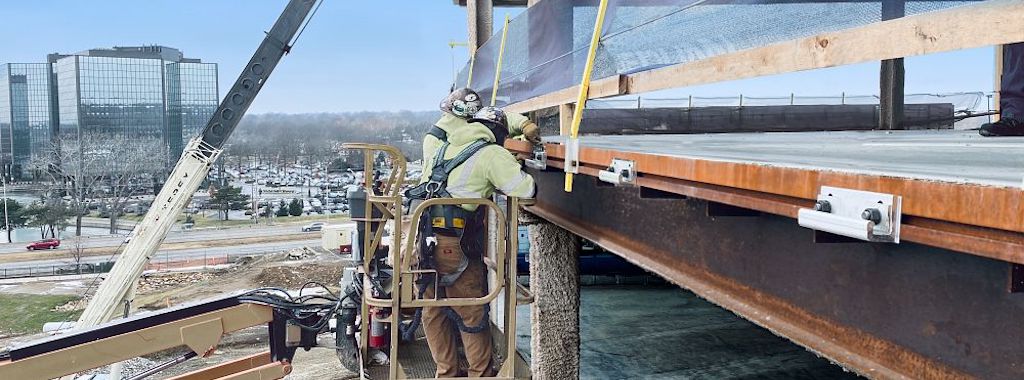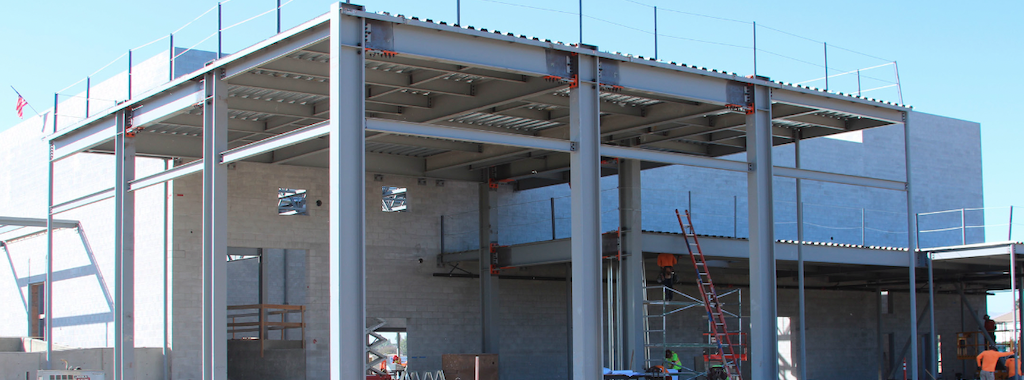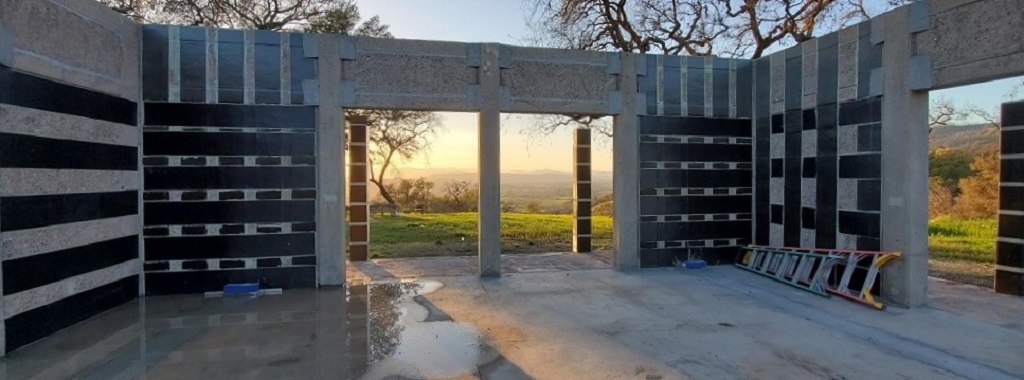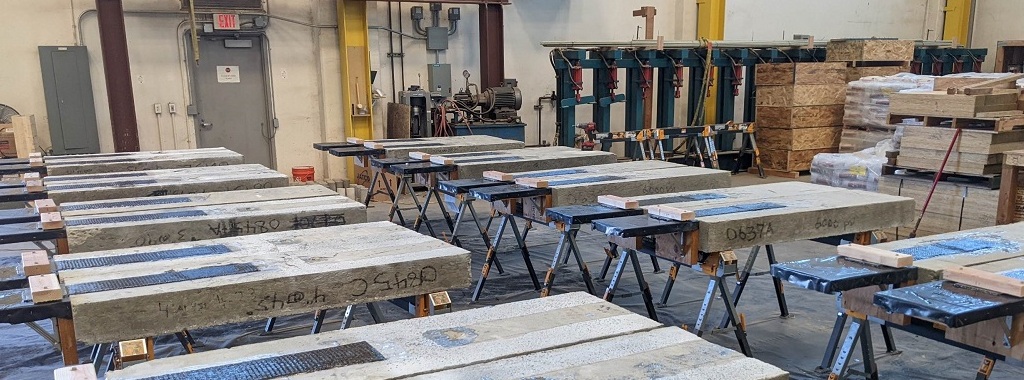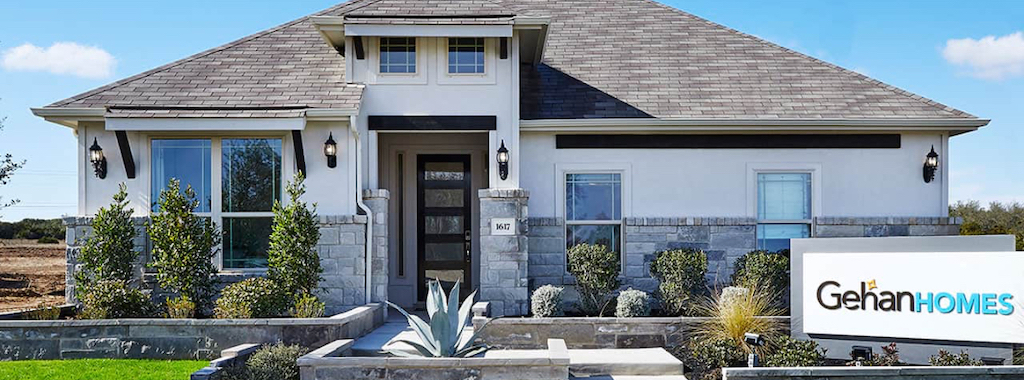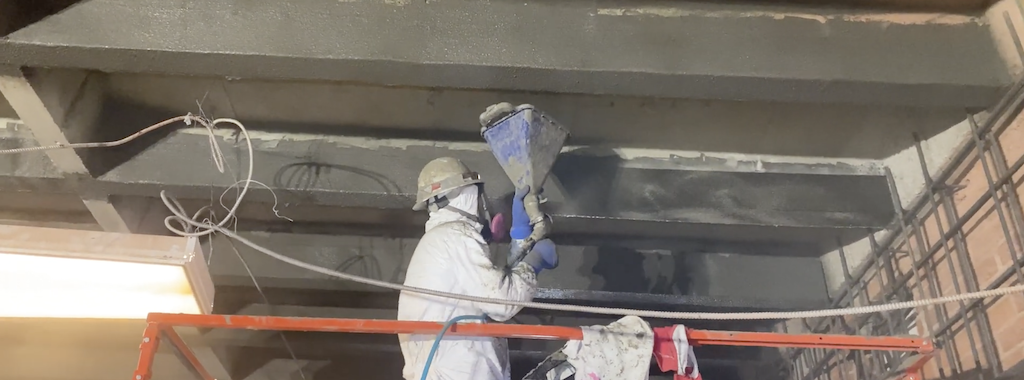Strengthening of shear walls and diaphragm-to-wall connections has started on Little Tokyo Towers (see photo 1) located in downtown Los Angeles, CA. This senior–living residential facility was built in 1975. Structural analysis by Tuan and Robinson Structural Engineers showed that some modest strengthening was required to improve the building’s lateral system performance in the event of an earthquake.
Category: Case Studies
Case Studies highlighting Simpson Strong-Tie solutions.
Project Snapshot Series Part 2: Historic Theatre Retrofit Using FRP
Structural renovation work continues on an historic, 1920s-era theater in Hollywood, California. This major renovation will improve the structural performance of the building and help ensure that theatergoers and building occupants are safe in the event of a major earthquake. We are excited to share a second update on this project that focuses on the use of fiber-reinforced polymer (FRP) for strengthening the theater’s roof diaphragm. Continue Reading
Mechanical Anchors: Screw vs. Expansion: — Which Is Right for Me?
Not all post-installed mechanical anchors are created equal. There are key differences between screw and expansion anchor types — differences that include how they gain their holding strength, installation requirements, and overall anchor performance. In the following post, field engineers Todd Hamilton, Chris Johnson and Derek Gilbert compare the two anchor types.
Inventing the Edge-Tie System
Last fall we hosted a two-part webinar series on the latest innovations in designing cladding connections for structural buildings. The first webinar, covered some of the biggest challenges that fabricators, engineers, and contractors in the structural steel industry face when designing façade attachments to a building structure. We discussed new design methods and solutions, such as bolted connections that do not require any field-welding to help enclose buildings quickly and reduce overall project schedules and costs.
Spotlighting Our Yield-Link® Moment Connection: Three Project Cases
Our Yield-Link connection is precision-made to meet the tough demands and increased loads of structural steel construction. From building owners to engineers, to contractors and fabricators, the Yield-Link’s state-of-the-art design saves everyone time and money — while providing a connection that keeps structural steel buildings strong and safe.
FRP Witness Panel Preparation and Testing – Lessons Learned and Best Practices
As a Composite Strengthening Systems™ Field Engineer at Simpson Strong-Tie, I’ve supported many composite strengthening projects from design through construction and had hands-on experience troubleshooting issues with FRP witness panels. Through these experiences, I’ve learned a few lessons and developed some best practices worth sharing with anyone in the engineering and construction communities who may encounter similar issues.
Strategic Alliance with Structural Technologies Brings End-to-End FRP Solutions to Concrete Strengthening and Repair Industry
Simpson Strong-Tie and Structural Technologies formed a strategic alliance for Composite Strengthening Systems™ (CSS) products in 2021. CSS products include fiber-reinforced polymer (FRP) and fabric-reinforced cementitious matrix (FRCM) strengthening systems. Additionally, where CSS products are not a viable solution, the alliance can also offer recommendations and design for other non-CSS or conventional strengthening solutions. This alliance allows each firm to specialize in their areas of expertise:
How a Top US Homebuilder Turbocharged Market Growth and Managed the Job Start Process with the Scalable LotSpec Solution from Simpson Strong-Tie
As one of the top 10 private homebuilders in the US (and one of the top 25 overall), Gehan Homes has explored its fair share of technologies promising efficiency and productivity gains. When it came to pulling home designs, plans, elevations, and options into full job start packets (JSPs), the Texas-based homebuilder managed to generate about 400 JSPs per year before the productivity cost of eight hours each began to limit growth.
Project Profile: Reinforcing Concrete Joists to Increase Load Rating
We’re excited to share another fiber-reinforced polymer (FRP) project that required both flexural and shear strengthening (photo below) of reinforced concrete joists to enable the slab floors to carry more live load. The structure is in Southern California, and appears to have been built in the 1950s or 1960s when pan joist construction was common. The EOR for this project, Structural Focus, is an experienced structural engineering firm known for seismic retrofit solutions. The FRP applicator was FD Thomas Structural Specialties, a contractor with decades of FRP installation experience.
Case Study: Gruening Middle School’s Seismic Damage Repair Solution
It can be a challenge to repair an earthquake-damaged structure.
During the 7.1-magnitude 2018 Anchorage earthquake, Gruening Middle School in Eagle River sustained more damage than any other school in the Anchorage School District. Review of the school showed the existing masonry walls suffered damage and separation from the roof. During the retrofit design, the Reid Middleton structural engineering team (Anchorage) determined the masonry walls weren’t adequately reinforced to meet current code requirements. They were seeking an easy-to-install strengthening solution that wouldn’t add significant weight to the building.






